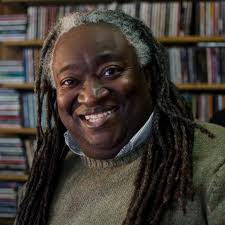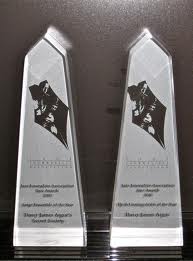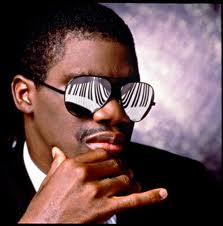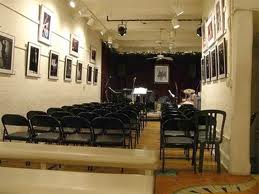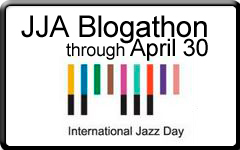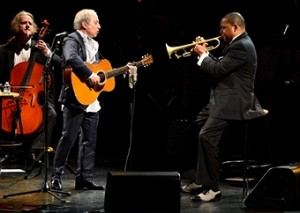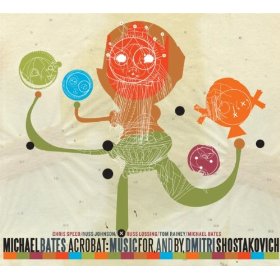WNYC/WQXR program host David Garland makes a good point, in reference to the announcement by WGBH (Boston) that it’s cutting back its nightly “Eric in the Evening” jazz show, Steve Schwartz’s Friday night jazz show and  Bob Parlocha’s overnight jazz show. Writes Garland:  “I wish good radio was considered a good ‘story’ while it’s ongoing, not only […]
News-talk doesn’t replace jazz programming
Of the many postings about Boston radio station WGBH’s misguided downgrading of its signature jazz coverage — managing director Phil Redo has announced the removal of long- beloved prime time show host Eric Jackson to weekends only, the end of producer Steve Schwartz’s Friday night show, and the cut back Bob Parlocha’s overnight program from […]
Why we give Jazz Awards
Winners of the 16th annual Jazz Journalists Association Jazz Awards are being announced at a gala party this afternoon in New York City (at the Blue Note, 4 to 6 pm, sold out!), and celebrated in 13 other cities, Auckland to Tucson, all hailing their own local jazz heroes. Why do we (I’m pres of the JJA) do […]
Jazz and/or free New York City summer music festivals
I love the conjunction of “free,” “jazz,” “festivals,” “summer” and “New York City” Â — though not all free fests are jazz, and not all jazz fests are free (in either of two senses of the word). For instance, the 17th Vision Festival, which I write up in my CityArts-New York column, has some free shows, […]
Happy Moog Day, electronic music fans
Google celebrates the late inventor Robert Moog whose electronic music synthesizer still holds universes of unexplored and unexploited potential on his 78th birthday by making its Doodle a working, recordable monophonic (one-tone-at-a-time, though three oscillators so it can be a complex tone) mini-Moog. A video demonstration explains how to use it, and good luck with that! […]
Marcus Roberts weirds classic jazz, frees banjo’s Fleck
Pianist Marcus Roberts has broad reach and pushme-pullyou ideas, reharmonizing Jelly Roll Morton and improvising freely with banjoist Bela Fleck, as I detail in my latest column in CityArts-New York. At Jazz at Lincoln Center Robert, the blind visionary, led a sextet that hewed to Morton’s structures while incorporating a handful of solo styles from […]
Bassist Duck Dunn – deep, syncopated, bouncy – RIP
Donald “Duck” Dunn, bassist for Booker T. and the MGs, most all the grits ‘n’ greens soul voices who emerged from Memphis’ Stax Records in the 1960s, and dozens of major blues-rock-pop stars during his subsequent career as an LA-based studio musician, died in his sleep at age 70 in the early morning of May […]
The Jazz Gallery seeks new downtown Manhattan home
My latest column in CityArts-New York highlights the search for a new location of the Jazz Gallery, a splendid venue that has been responsible for launching some of the most exciting musicians and freshest projects to emerge in jazz and improvised music over the past 17 years. Commissions, residencies, workshops, rehearsal space and performances not […]
International Jazz Day concert review (few elsewhere)
Read my short-hand review, please, in CityArts-New York of the sunset concert of International Jazz Day in the General Assembly of the UN in New York City. The music of Louis Armstrong, Duke Ellington, Miles Davis, Thelonious Monk, John Coltrane, Billie Holiday, Howlin’ Wolf , Leonard Bernstein and many more was manifest by all-stars of all ages […]
Int’l Jazz Day as it happens: UNESCO concerts live-streamed
A sunrise concert  in New Orleans’ Congo Square, from which jazz arose, in celebration of UNESCO’s International Jazz Day (spearheaded by Herbie Hancock), is being streamed as I write (Dr. Michael White took the last solo, over the Dirty Dozen Brass Band) at Jazzday.com and at the Thelonious Monk Institute website. Those platforms will also feature tonight’s […]
Grants for (visual) arts journalists
Creative Capital and the Warhol Foundation have an idea I adore: Offer grants “directly to individual writers . . . Â in recognition of both the financially precarious situation of arts writers and their indispensable contribution to a vital artistic culture.” From the Request for Proposals: The program, which issues awards for articles, blogs, books, new […]
Rhymin’ Simon swings $3.6 mil Wynton’s way
Jazz at Lincoln Center has released a “Post Gala Report” on the April 18 concert debut of Paul Simon performing his career songbook with both his band and the Lincoln Center Jazz Orchestra with Wynton Marsalis, plus special guest vocalist Aaron Neville. Â $3.6 million was raised at the black tie event, which provided dinner and […]
New York jazz now, on records (listen and be wowed)
City Arts did post my column of record reviews so please read what I wrote about Henry Cole and the Afrobeat Collective, Steve Lehman Trio, Less Magnetic (on Facebook, or view their show below), Esperanza Spalding, Michael Bates (plays Shostakovich), and Wayne Escoffrey. Then, I urge you, check out samples of those artists online, and […]

